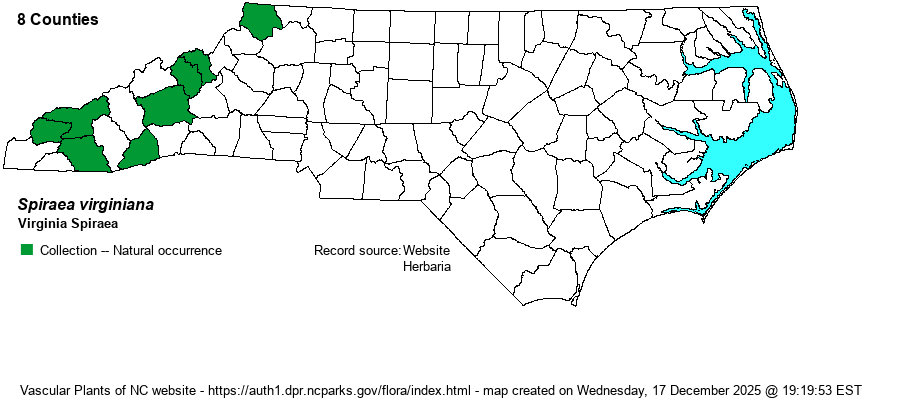| Author | Britton | |
| Distribution | Scattered over most of the Mountain province, but with a quite restricted habitat that limits its range to linear occurrences -- riversides only. Present only at low to middle elevations in that region.
This species is endemic to the central and southern Appalachians, ranging north to extreme southwestern PA, and south to northern GA, and west to the Cumberland Mountains of TN and KY.
| |
| Abundance | Rare everywhere in its range, not just in NC. This is a Federally (and State) Threatened species. | |
| Habitat | This species is limited to banks of rivers and larger streams, often in fairly open situations, where there is at times some moderate scour (to prevent excessive competing woody vegetation). |
| Phenology | Blooms in June and July; fruits in August to September. | |
| Identification | This is a widely branching deciduous shrub with long and often arching stems; it grows to about 6-8 feet tall. The leaves are entire or at least nearly entire, and are narrow and mostly oblanceolate, reaching about 2 inches long. Despite it growing along river and stream banks and with gently rounded white flower clusters, it can be tricky to find this rare species from a distance (such as from a canoe), as other streamside species such as Common Elderberry (Sambucus canadensis) and Ninebark (Physocarpus opulifolius) are often present and in bloom at the same time. If you are looking for this Federally listed species, limit your search to flowing rivers or large creeks and look for a very bushy shrub with long branches and narrow leaves. | |
| Taxonomic Comments | None
| |
| Other Common Name(s) | Virginia Meadowsweet, Appalachian Spiraea. At times the common names of the Spiraea species are given as “Spirea”, and not “Spiraea”. | |
| State Rank | S2 | |
| Global Rank | G2? | |
| State Status | T | |
| US Status | LT | |
| USACE-agcp | FACW link |
| USACE-emp | FACU link |

